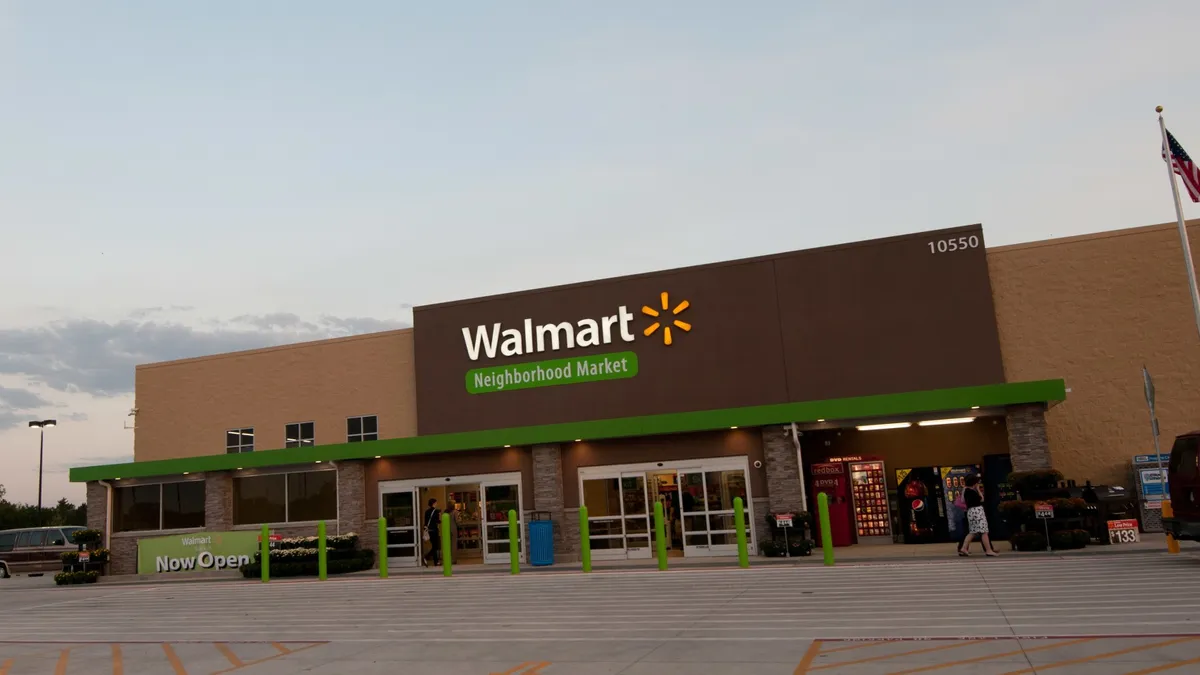Dive Brief:
- Walmart’s comparable-store sales in the United States rose 7.4% during the first quarter of fiscal year 2024 as the retailer broadened its grocery market share and its digital operations grew rapidly.
- Walmart’s U.S. e-commerce sales were up 27% in Q1, driven in part by strong growth in its pickup and delivery businesses and an increase in third-party retailers using its marketplace to fulfill orders, Walmart U.S. President and CEO John Furner said Thursday during the company’s earnings call.
- Walmart’s profits grew faster than its sales during Q1 even as the tilt among shoppers towards food and consumable goods negatively impacted its gross margins, President and CEO Doug McMillon said Thursday during the company’s earnings call.
Dive Insight:
Walmart’s results during Q1 were substantially affected by strong shopper interest in consumable goods as people continue to search for ways to escape the brisk inflation that continues to impact the economy, executives said during the call.
The company said its U.S. division posted net sales for the quarter of $103.9 billion, a 7.2% year-over-year increase. Operating income was up 11.7% compared with the first quarter of last year, to $5 billion.
Underscoring the powerful role Walmart’s grocery business played in its performance during the period, the company recorded a more than 3.5% shift in its sales mix from general merchandise to grocery health and wellness products, CFO John David Rainey said. That exceeded the category mix shift the retailer saw during all of last year, Rainey said.
Walmart is seeing inflation in the high single digits to low double digits in the dry grocery and consumables categories, which he said is creating uncertainty for the company as it looks ahead to the second half of 2023, according to McMillon. Walmart has continued to attract higher-income and younger shoppers looking to save money, he said, adding that Walmart’s private brand penetration rose more than 1% year over year during Q1.
McMillon said Walmart is working with prepared food and consumable suppliers in an effort to bring down costs, which he said “would help them drive unit volume, would help us with mix and free up cash for customers to use for discretionary goods.”
McMillion also noted that Walmart is building what he called a “more connected intelligent and automated network” as it looks to improve efficiency. The investments include adding automated order-assembly facilities, which Walmart calls market fulfillment centers, as well as thousands of electric vehicles for last-mile deliveries, McMillon said.
Walmart has raised its guidance for fiscal year 2024 based on the company’s strong Q1 performance and expectations for Q2, Rainey said.
The company now expects sales for Walmart U.S. to grow faster than the retailer forecast in February, when Walmart said it expected the division’s comparable sales for the year, excluding fuel, would rise in the range of 2% to 2.5%, he said. Walmart believes Sam's Club’s growth during the year will be about the same as it had previously forecast, Rainey added.
“I think it's an important point as you think about the future of Walmart. As we have these new shoppers coming to us, as we have higher income shoppers coming to shop for not only grocery but general merchandise, we want to retain those. We want to retain them with better experiences, better product offerings, and we're seeing that,” Rainey said.













